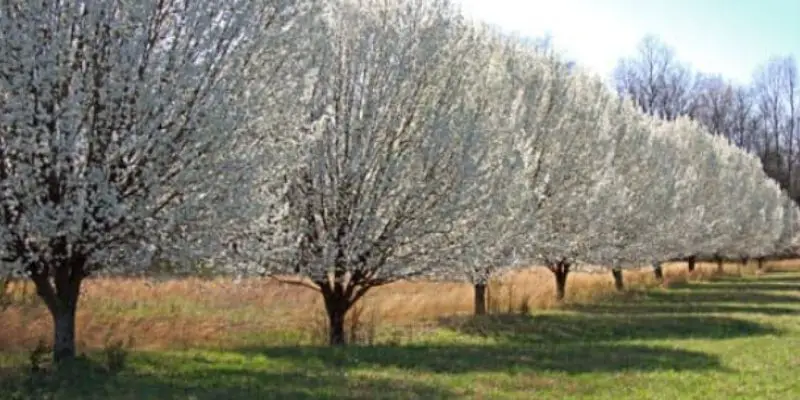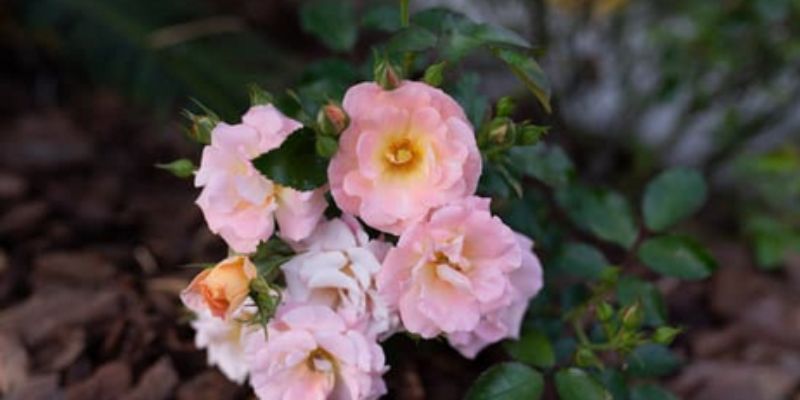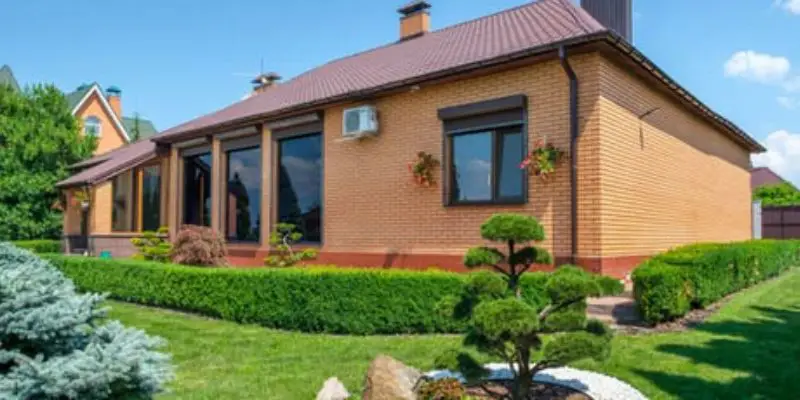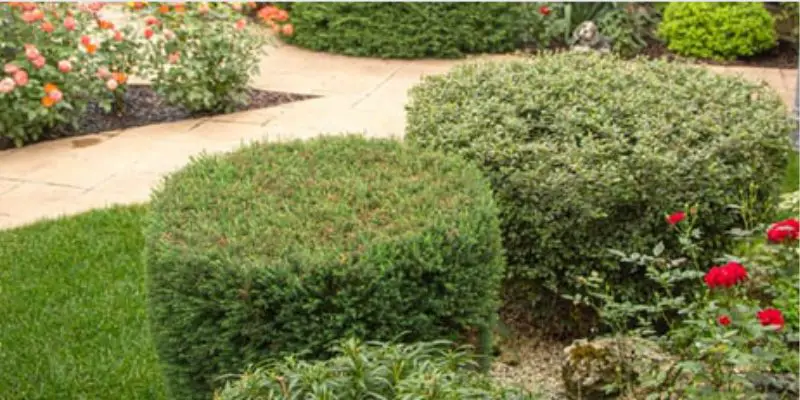The attractive spring blooms, uniform pyramidal shape, and vibrant fall foliage have made the Bradford pear trees a popular choice for landscaping. Nevertheless, these fast-growing plants need to be taken care of well lest they start presenting numerous challenges. This guide will provide an in-depth analysis of Bradford pears’ biology, and growth habits as well as how to trim Bradford pear trees, and care requirements at each stage of their lifecycle. In addition, I will give you some alternative plants that might be more suitable for your yard and personal preferences if Brandford pears don’t seem to work for you.
Understanding the Biology and Growth of Bradford Pear Trees
The Callery pear tree cultivar known as ‘Bradford’ is native to China and Vietnam; it was introduced in North America during the 1960s as an ornamental plant thereby becoming very common because of being attractive quickly. However rapid urbanization and weakness traits within them have forced many territories to discourage or prohibit planting them anymore.
Bradford pears are deciduous trees with fast growth that mature at heights between 30-50 feet with similar spread. They have a distinct pyramidal or sometimes round-shaped form featuring one central leader trunk radiating lateral branches.
During the summer, they have dark green leaves that are broadly ovate and turn red, purple, or orange during autumn. In spring’s onset, they burst out in clusters of beautiful white flowers which unfortunately have a pungent smell.
Although these trees can be amazing landscape specimens through their lush foliage and flowery display, there are some serious maintenance issues arising from their fast growth rate and structural tendencies. This wood is notoriously weak and breakable especially when subjected to strong winds as well as heavy loads of ice or snow. Besides this, Bradford pear has a fairly short life span of around 15-25 years in comparison with longer-lived ornamental trees.
Best Cordless Battery Hedge Trimmers – Top 7 Reviews and Buying Guide
Factors Influencing the Growth and Structure of Bradford Pear Tree
Several important factors determine the size, shape, and structural integrity of Bradford Pear Trees over time:
Soil Conditions: These trees prefer well-drained soil slightly acidic and rich in organic matter. Compacted nutrient-poor or overly alkaline soils can stifle their growth and result in branch and trunk problems.
Sunlight Exposure: The full sun is where Bradford Pears thrive best thus requiring at least 6 hours of direct sunlight per day. Lack of enough light in the interior canopy will make it overcrowded leading to shading problems.
Climate and Weather: Bradford pears are capable of living in different weather conditions but they can be affected by extreme temperatures, drought, or violent storms. The new growth may be damaged by sudden cold snaps or late spring frosts.
Planting Location: When planting a Bradford pear, you need to select an area that has sufficient space for the tree to expand without having any conflicts with structures, utilities, or other plants. Overcrowded areas promote weak and upright branches.
Proper Establishment Care: The newly planted Bradford pear trees should be watered well, mulched, and supported with stakes during the first few years to help them develop strong root systems and scaffold structures.
Maintenance Pruning Habits: It is important to frequently trim off selected parts of growing Bradford pear trees to shape them as well as maintain their usual pyramid shape. If pruning is not done, there will be structural problems.
When to Trim Bradford Pear Trees
Timing is important when trimming Bradford pear trees. You generally want to prune them during their dormant season, in late winter or very early spring before buds begin to swell and open. Pruning during active growth periods in summer or fall can stress the tree and lead to diseases entering through fresh wounds.
The ideal time to trim Bradford pears is typically in February or early March. However, you can start as early as late January in warmer climates like the South. Just avoid pruning once you see signs of spring growth.
Bradford pears are fast growing trees, so they need more frequent pruning when young to establish good branching structure. Start pruning them annually after the first or second year in the ground. Mature trees may only need trimming every 2-3 years to maintain shape.
Tools and Supplies for Trimming Bradford Pear Trees
Trimming Bradford pear trees does require having the right pruning tools for the job. Here are the essential supplies you’ll need:
- Bypass hand pruners – For cutting small branches up to around 1/2 inch diameter
- Loppers – For cutting medium branches between around 1/2 to 1 1/2 inches diameter
- Pruning saw – For cutting large branches over 1 1/2 inches diameter
- Pole pruner/saw – For reaching high branches from the ground
- Ladder or orchard ladder – For accessing high branches and the tops of trees
- Safety glasses and gloves – To protect your eyes and hands while pruning
- Disinfectant, like isopropyl alcohol – For cleaning tools between trees to prevent disease spread
- Tree sealant or pruning paint (optional) – For covering large pruning wounds
Make sure to use sharp, high-quality tools to ensure clean cuts that heal quickly. Dull, damaged tools can crush stems and delay wound closure. Clean all cutting tools with disinfectant between trees or if you notice signs of disease.
How to Trim Bradford Pear Trees
Here are the step-by-step instructions for properly trimming your Bradford pear trees:
1. Choose a Main Leader
Bradford pears naturally want to grow with a central leader that goes straight up to form the peak. When trees are very young, choose one strong, vertical stem to be the leader. Remove competing leaders by cutting them off at their point of origin.
As the tree matures, continue pruning to maintain the central leader and pyramidal form by removing upright branches that compete with the leader.
Also read: 7 Best Top Rated Electric Hedge Trimmers – A Detailed Buying Guide
2. Establish Scaffold Branches
Scaffold branches form the tree’s basic structure and should:
- Originate at different heights along the main trunk
- Radiate outwards at a 45 to 90 degree angle
- Be evenly spaced both vertically and radially around the trunk
- Not cross or rub together
When pruning young Bradford pears, select 3-5 vigorous lateral branches to be permanent scaffolds. Choose branches with wide angles of attachment and even spacing. Remove competing branches and inward facing branches with narrow angles.
On mature trees, maintain scaffold structure by cutting crossing, damaged, or inward facing branches. Prune to encourage healthy outward growth.
3. Remove Suckers and Water Sprouts
Bradford pear trees are prone to developing vertical water sprouts that grow straight up from the scaffold branches and trunk. They steal energy from more productive branches and ruin the natural shape.
Regularly remove water sprouts completely by cutting them off flush with the branch they emerge from. Also prune out any suckers growing directly from the root system.
4. Thin Out Interior Growth
Bradford pears tend to develop a thick canopy of interior branches and leaves if left unpruned. Thinning helps sunlight penetrate into the canopy, encourages flowering, reduces pests/diseases, and maintains the pyramidal shape.
Selectively remove small interior branches back to lateral buds or stems. Take out around 15-20% of the live interior growth when pruning mature trees.
5. Tip Branches to Control Height
Bradford pears can quickly outgrow their space, sometimes reaching up to 30-50 feet tall. If your tree is getting too tall, you can tip back the branches to control its size.
Find a lateral bud or branch on the end of a limb that faces outwards. Make a slanting cut just above it to remove the unwanted length. Tipping branches back stimulates the bud below to grow a new lateral shoot.
Tip back scaffold branches as well as upper branches that extend above the desired height. This helps compact the crown.
6. Clean Out Broken or Dead Wood
Regularly remove any dead, diseased, broken, or crossing branches back to the branch collar. Cutting them off improves tree health, structure, and appearance.
Disinfect pruning tools after removing diseased wood to prevent spreading infection. Avoid leaving branch stubs – cut to the branch collar.
Best Electric Hedge Trimmer – Top 5 Picks and Buying Guide
7. Maintain Clearance for Streets/Sidewalks
Make sure to prune branches that overhang streets, sidewalks, driveways, and buildings up to a height of 8-10 feet for clearance. Use a pole pruner or ladder to reach high limbs.
Time clearance pruning so you are only removing live branches within the dormant season for best growth and wound closure.
8. Shape and Balance the Canopy
Stand back periodically to check the shape of your Bradford pear as you prune. The goal is to maintain its symmetrical pyramidal form with a straight central leader.
If one side is denser or higher than the other, remove extra branches to balance it out. Shaping cuts are best made in late winter before spring growth.
Avoiding Common Mistakes When Trimming Bradford Pear Trees
Trimming Bradford pears incorrectly can damage trees and lead to future problems. Here are some key mistakes to avoid:
- Topping or shearing off all top growth into a blunt cut. This stimulates dense, weak regrowth.
- Removing too many large branches at once, especially on mature trees. Never remove over 25% of live branches.
- Leaving branch stubs by not pruning back to the branch collar. This delays wound closure.
- Pruning in summer or fall leading to disease and pest issues.
- Using dirty or dull tools that crush rather than cut branches cleanly.
- Overthinning the interior and leaving too few small branches.
By following proper Bradford pear pruning techniques and timing, you can keep your trees healthy, structurally sound, and looking beautiful.
Signs Your Bradford Pear Trees Need Pruning
How do you know when it’s time to get out the loppers and give your Bradford pears some attention? Watch for these signs:
- Crossing, rubbing, or crowded branches
- Narrow crotch angles between branches
- Lots of undersized interior twigs and foliage
- Water sprouts emerging along branches
- Suckers growing from the base
- Thick, congested branch structure lacking light penetration
- Irregular shape or one-sided appearance
Bradford pears that haven’t been pruned in 2-3 years likely need some trimming maintenance to renew their form and vigor. Annual pruning when trees are young prevents future issues.
Pruning Bradford Pear Trees at Every Stage of Growth
Pruning properly timed is likely the most important maintenance activity undertaken for Bradford pear trees. Regular trimming helps in shaping these trees, maintaining their unique pyramidal shape, stimulating flowering, and avoiding structural problems. The specific type of cutting required will depend upon the age as well as maturity level or stage that has been reached by the tree.
Young Bradford Pear Trees (1-5 Years Old)
The first few years after planting require increasing pruning attention for establishing basal scaffold branches along with a central leader within Bradford pears. This includes:
- Choose a single, strong central leader stem that will serve as the main trunk
- Establish 3-5 well-spaced scaffold branches facing outwards at various heights
- Prune off any competing upright stems or narrow-crotched branches
- Thin dense growth inside the tree allows light and air penetration
This kind of pruning is usually done once a year, ideally in late winter or very early spring before a bud burst occurs. The aim is to form a solid framework where the tree can be established uniformly.
Maintenance of Mature Bradford Pear Trees (5+ years old)
As trees reach maturity, the focus on pruning shifts towards the preservation of existing scaffold structures, height control, and selective thinning within. Key tasks include:
- Getting rid of any broken ones, sickly ones, or those rubbing against each other
- Stopping the uppermost branches from growing too tall
- Cutting back internal branches by about 15-20% for adequate light entry
- Removing all vertical water sprouts and suckers from around the base.
Mature Bradford pears typically require this type of maintenance every two to three years in late winter. Airflow should be encouraged without removing excessive amounts of live growth while maintaining its pyramidal shape.
Renewing Neglected Bradford Pear Trees
When a pear tree has not been pruned properly for many years, it can develop a thick and overcrowded canopy as well as structural weaknesses. In this case, a major rejuvenating prune may be necessary to include:
- Taking away up to ¼ of the total branches alive to expose inside
- Cutting back scaffold branches by 1-2 feet to reduce height and restore shape
- Removing suckers and water sprouts selectively or inward-facing branches
- Ensure that there are proper angled cuts at the branch collar so that healing is clean.
This kind of severe pruning is best done in late winter before spring growth begins. The tree may take two or three years to fully recover and regain its original form.
Proper Wound Cleaning and Aftercare
It is important regardless of when or how you prune your Bradford pears that you make angular cuttings without stubs because applying pruning paint/wound sealant may be wise. This not only helps prevent disease but also insect infestation, as well as excess cutting moisture loss. Also, ensure that your pruning tools are thoroughly disinfected between each tree lest some infections spread through them.”
Keep a close check on the tree after extensive pruning for signs of stress and regrowth issues. During dry spells, water extra and perhaps apply a balanced fertilizer in early spring to encourage healthy new growth.
Recognizing Signs of Health and Disease in Bradford Pears
Keeping close observation of the overall health and condition of your Bradford pear trees is very important as they may have certain problems that might jeopardize their integrity, beauty, and longevity. Look out for these common signs:
Discolored, Distorted, or Prematurely Dropping Leaves
Pest infestations, diseases, or environmental stresses such as overly dry summer soil resulting in leaves appearing scorched; curled; spotted, or turning color early indicate pest infestations.
Cankers, Cracks, or Oozing Sap on Trunks and Branches
Bursting growths or wounds can be indications of wood decay, bacterial or fungal infections, mechanical injury due to storms, or malpruning.
Wilting, Flagging, or Dieback of Branches
Any branch that becomes wilted, discolored brown in coloration, or dies off from the tips may be suffering from fire blight, root rot, drought stress, or internal structural defects.
Excessive Vertical Suckers and Water Sprouts
An excess of vertical suckering and water sprouting throughout the trunk and scaffold branches indicate that the tree is stressed out and trying to compensate.
It is important to identify these symptoms promptly and act accordingly. In complex cases, it may be necessary to contact an arborist who will help diagnose and treat such advanced problems.
Common Bradford Pear Diseases and Pests
Although adaptable trees in general terms, are susceptible to different ailments as well as insect pests that could harm their health over time. Some of the most troubling diseases include:
Fireblight -A catastrophic bacterial infection that makes flowers; and leaves wilt and then turn black. It spreads fast enough to kill all individuals within a short period.
Leaf Scorch – A fungus causes leaf scorch resulting in browning and crispy edges of leaves thereby inhibiting growth while making it more vulnerable.
Various fungal infections lead to canker diseases resulting in depressed stains of different colors on the trunks and branches rendering them weak in structure.
Borers – These are wormlike immature that bore through the wood disrupting the flow of nutrients and water and providing opportunities for decay to set in.
Scale Insects – Branched and leaved infestations by sapsuckers that exude a sticky substance encouraging mildew.
It is therefore important to avoid or promptly treat these problems to maintain the health and longevity of your Bradford pear trees. Some strategies may involve; the application of fungicides, and insecticides, pruning out affected parts, and promoting general tree vigor through proper care.
Alternatives to Bradford Pear Trees
Bradford pears are high maintenance trees with some drawbacks like:
- Weak branches prone to storm damage
- Short lifespan of just 15-25 years
- Invasive potential from prolific fruits and seedlings
- Offensive odor from flowers
- High susceptibility to fireblight
Due to issues concerning maintenance requirements and structural weaknesses with Bradford Pears, many people living in homes including communities are looking for other smaller ornamental tree options that have similar beauty without any disadvantages. Some of these good substitutes are:
- Serviceberry (Amelanchier spp.) – The serviceberry is a tree native to North America that bears beautiful flowers in the spring and can also provide edible berries and attractive fall colors. Growing 15-25 ft high, it has an erect-oval form with several stems.
- Redbud (Cercis canadensis) – Redbud trees are small deciduous trees that have heart-shaped leaves followed by bright pink flowers. Redbuds typically reach heights of 20-30 feet tall and have spreading habits.
- Smooth Hydrangea Tree (Hydrangea arborescens) – It is a big shrub or small tree that has globular clusters of enormous flowers that change their shades during the seasons. It grows up to heights of about 10 to 15ft.
- Japanese Tree Lilac (Syringa reticulata) – Japanese tree lilac is mostly valued for its abundant, fragrant flower clusters of creamy white in early summer. Japanese tree lilacs attain a maximum height of about 20-30 ft in the field with a broadly upright oval shape.
- Flowering Dogwood (Cornus florida) – Flowering dogwood is one such plant for ornamental purposes whose tiny white or pink bracts appear every spring while red foliage grows in autumn. Dogwoods stop growing at around fifteen to thirty feet tall range on average.
- Crape Myrtle (Lagerstroemia indica) – Crape myrtle is usually grown as a large shrub or can be trained into a small multi-stemmed tree that provides tough summer blooms, exfoliating bark, and vividly colored fall foliage. They grow naturally from fifteen to thirty-foot-tall trees.
- Japanese Maple (Acer palmatum) – Japanese maple trees have delicate lacy-like leaflets; they also turn yellowish when autumn comes bearing down on us; standing at between fifteen and twenty-five-foot level; these trees make great focal points within any garden scheme.
Each of these alternatives has its very own distinctive beauty and characteristics of growth that may be more appropriate to your landscape requirements and individual preferences. Before getting a substitute for your Bradford pear, find out the eventual size, light and soil needs, and climatic suitability for your area.
How to Trim Bradford Pear Trees – Rules, Removing, and Responsibility of Waste
As the downsides of Bradford pear trees are becoming more apparent, some municipalities and communities have taken steps to limit or even ban the planting of new cultivars. Before you cut down or maintain your Bradford pear tree, it’s good to confirm with local authorities if there are any by-laws or policies involving this kind of tree in your compound.
In case you need to take out an existing specimen of Bradford pear then it must be done cautiously respecting both human safety as well as environmental factors. Be sure to hire a certified arborist or tree removal company since these trees can pose serious threats when mishandled. Also, consider how best to get rid of the wood pieces and leftovers because in most places such as native areas this particular species is highly invasive given their prolific self-nature.
Planting and Establishing New Bradford Pear Trees
When planting a new Bradford pear into your landscape, taking the time to plant and care for it properly during its critical establishment phase can set the tree up for good health and stability over many years. Here are some key tips:
Site Selection and Preparation
Choose a spot with full sun exposure (at least 6 hours per day) that has well-drained slightly acidic soil. Avoid areas that are too close to buildings, overhead wires, or other vegetation competing against them. Enhance drainage and nutrient content if necessary by adding soil amendments.
Planting the Tree
Dig a hole for planting that is two or three times wider than the root ball but not deeper. Place the top of the root ball level with the surrounding soil. Finally, fill it with the original soil without any amendments which could result in the settling of the tree. Water this thoroughly.
Staking and Initial Care
For this purpose, use 2-3 solid tree stakes to maintain support and keep the young sapling from falling when it is windy. Move the stakes around as necessary during the first year of growth, and take them out once the stem can stand by itself. Mulch at least 2-4 inches deep around but not enough to touch the trunk.
Watering and Fertilizing
Moisture is important for Bradford pears, especially within their first year. Young trees should be watered 1-2 times per week with a minimum of 1 inch of water. In later years, monthly deep watering will generally suffice. Apply a balanced slow-release fertilizer in early spring to stimulate strong growth.
Planting a Bradford pear well can result in its becoming a very lovely and structurally sound specimen within a decade or less. The tree will however still need ongoing maintenance pruning though it will now be more tolerant.
Final Thoughts on How to Trim Bradford Pear Trees
Regularly trimming Bradford pear trees is essential maintenance required to keep them looking neat, prevent issues, and extend their landscape lifespan. By pruning them at the right times of year using proper techniques, you can control their shape, size, and growth. Bradford pears do require more frequent pruning than most trees, so make sure to inspect them yearly and take action once crossing, pest, or other problematic branches appear. With the right approach, you can have attractive and thriving Bradford pear trees for many years to come.
However, their high maintenance requirements and structural weaknesses need to be thought about before they are planted. This can only be achieved by understanding its biology, growth habits as well as issues related to it together with ensuring the appropriate pruning methods at every stage of the tree’s life thus increasing the longevity and beauty of these types of pears in home yards.
Nevertheless, whatever route you opt for have in mind health concerns both for your existing Bradford pear as well as any substitute tree. The right knowledge plus care will allow you to enjoy the aesthetic advantages offered by such plants over the years ahead.
Also read:
Best Electric Hedge Shears – Top 6 Reviews and Buying Guide
Top 5 Best Black and Decker Cordless Hedge Trimmer Reviews

Michael Glenn is a certified arborist and horticultural expert with over 15 years of experience in the landscape industry. His passion for plants and trees has led him to become a sought-after authority on pruning and trimming techniques. Glenn’s in-depth knowledge of proper pruning methods, timing, and tools has helped countless homeowners and professionals maintain healthy, aesthetically pleasing gardens and landscapes.
In addition to sharing his pruning expertise through practical tips, step-by-step guides, and expert advice, Glenn is also a respected author of pruning tool buying guides. His comprehensive reviews and comparisons ensure readers can make informed decisions when investing in quality loppers, pruning shears, saws, and other essential equipment. With a deep understanding of plant biology and sustainable practices, Glenn’s writing empowers audiences with the knowledge needed to properly care for green spaces.




